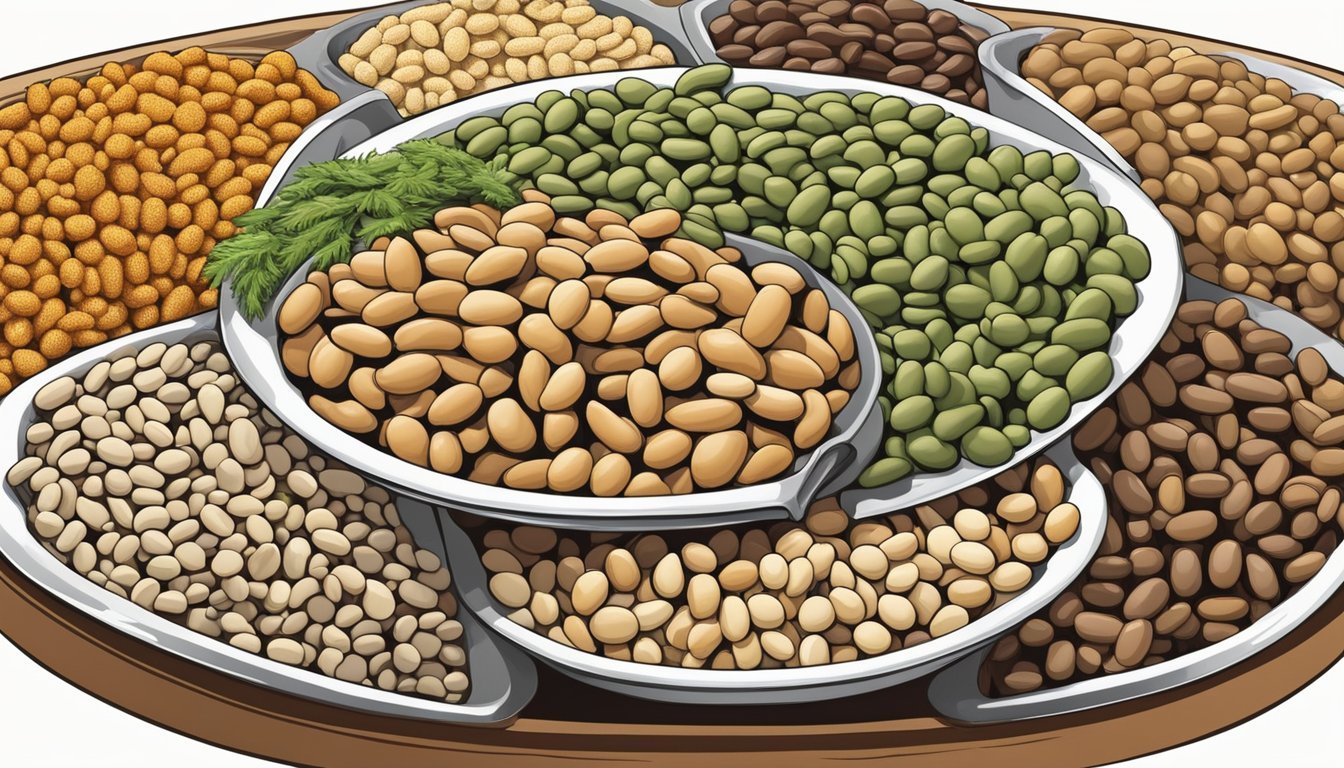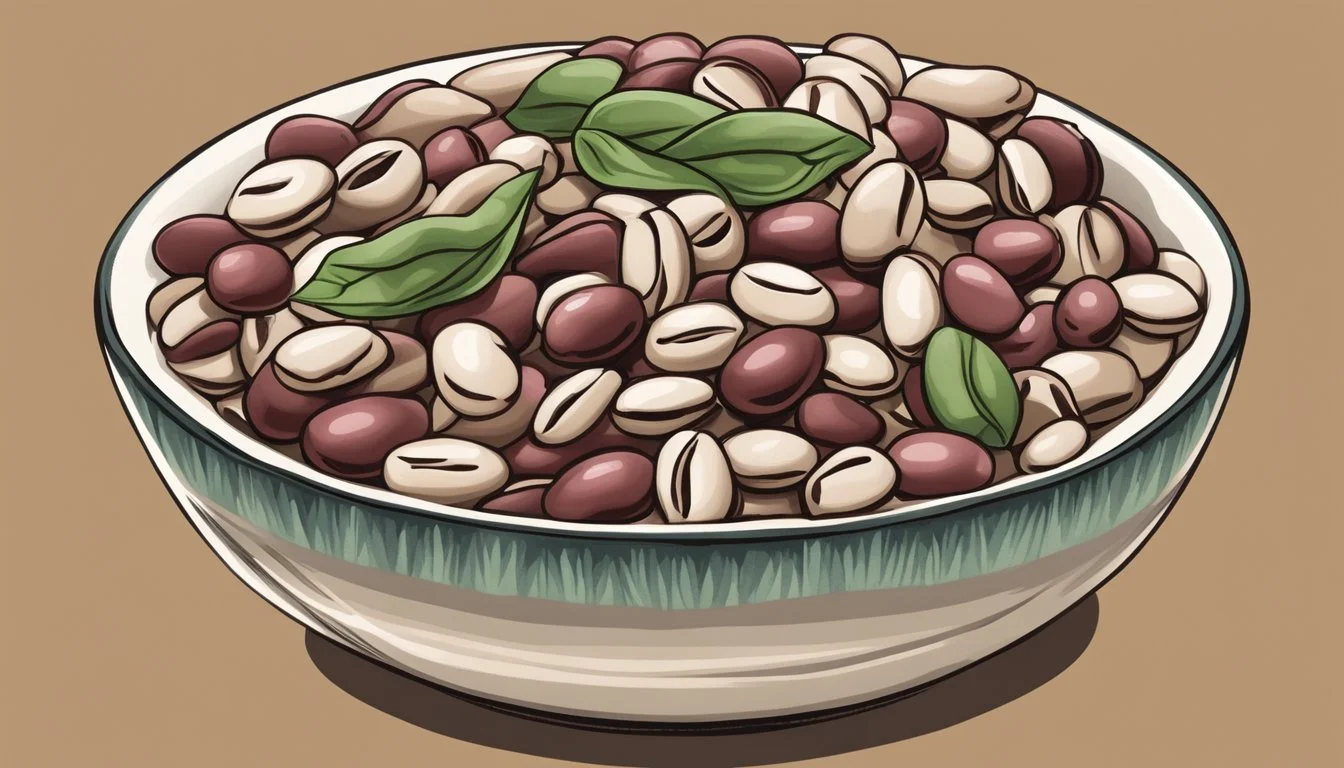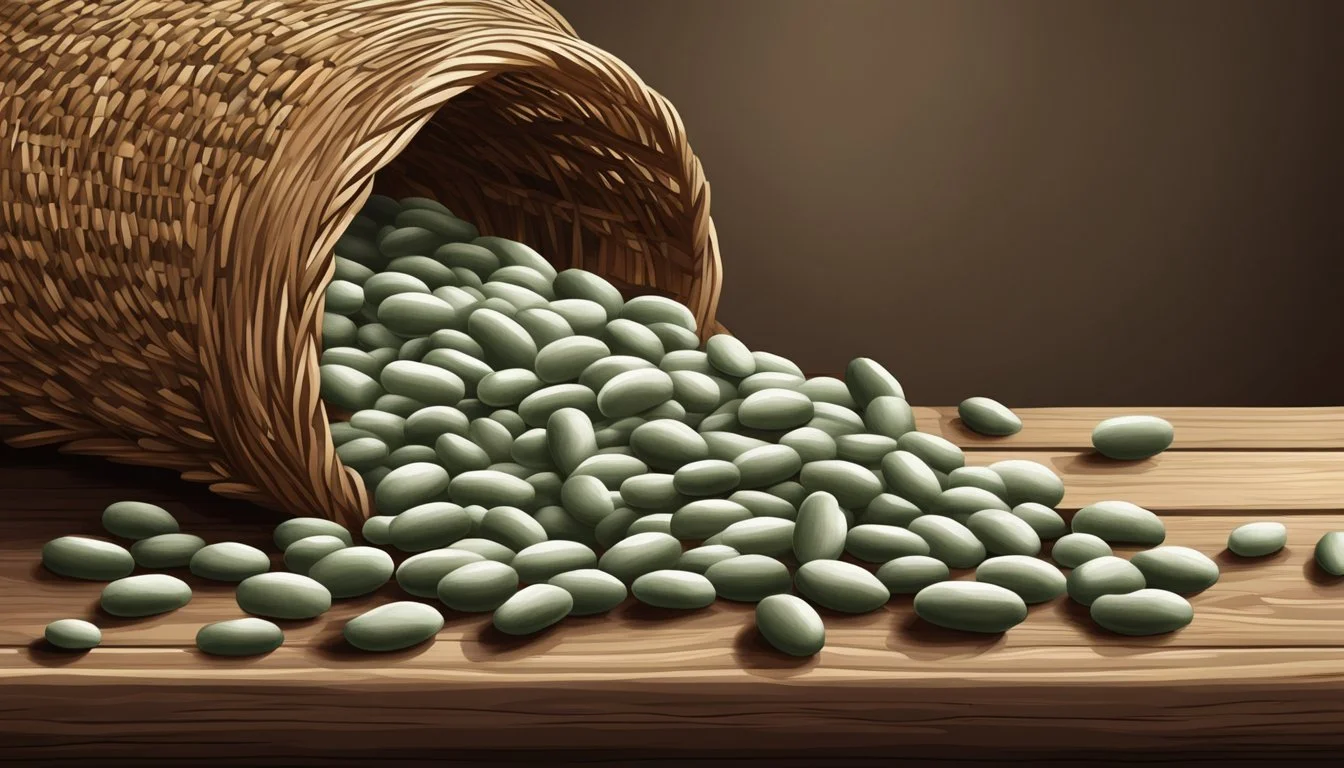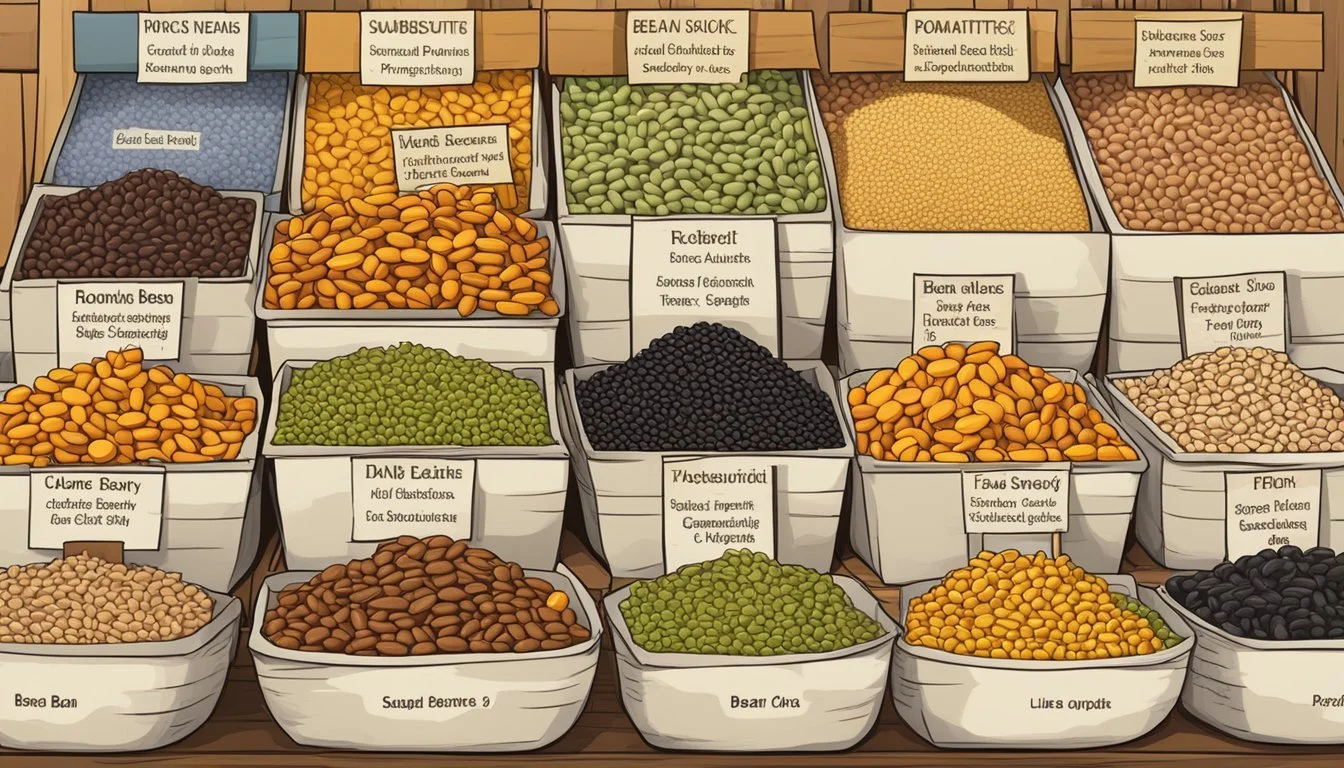Roman Beans Substitutes
Top Alternatives for Your Recipes
Finding the perfect substitute for Roman beans can be crucial when whipping up favorite recipes or exploring new culinary creations. One of the best substitutes for Roman beans is pinto beans, which offer a similar creamy texture and nutty flavor. Pinto beans can seamlessly fit into soups, stews, and side dishes where Roman beans are traditionally used.
Another excellent alternative is red kidney beans. Renowned for their hearty and robust flavor, red kidney beans can perform excellently in richer dishes like casseroles and chili. They bring a firm texture that holds up well under extended cooking times, making them ideal for heartier meals.
An often-overlooked substitute are butterbeans, or lima beans. With their creamy consistency and mild taste, butterbeans can add a touch of smoothness to any dish. Whether used in soups, salads, or even dips, these beans can transform a recipe, providing subtle yet impactful differences that elevate the dish.
Understanding Roman Beans
Roman beans, also known as cranberry beans or borlotti beans, are celebrated for their versatility in the culinary world. They have unique characteristics and offer a rich nutritional profile.
Characteristics of Roman Beans
Roman beans are known for their distinct appearance and taste. They are medium-sized legumes with a creamy texture once cooked. The outer skin of these beans is beige with red speckles, which turn brown upon cooking. Their flavor is nutty, with hints of chestnut that sets them apart from other beans. This makes them a favorite for a variety of dishes, particularly in Italian and Mexican cuisines.
Nutritional Profile of Roman Beans
Roman beans are a powerhouse of nutrition. They are rich in protein and fiber, making them an excellent component for a balanced diet. A typical serving of Roman beans offers substantial amounts of vitamins and minerals, including iron, magnesium, and potassium.
Protein: Essential for muscle repair and growth.
Fiber: Aids in digestion and helps maintain a healthy gut.
Vitamins & Minerals: Key vitamins include B vitamins, which support energy production, and minerals like zinc and copper that improve overall health.
These beans also contain antioxidants, which help to neutralize harmful free radicals in the body.
Culinary Uses of Roman Beans
Roman beans are versatile in the kitchen. Their hearty texture makes them ideal for soups, stews, and chili. They blend well in dishes without overpowering other flavors, making them an excellent base for a variety of recipes.
Some common culinary uses include:
Soups and Stews: Adding a creamy texture and a satisfying protein content.
Salads: Enhancing both the texture and nutritional profile.
Side Dishes: Simply cooked and seasoned for a healthy addition to any meal.
In essence, Roman beans are both a nutritious and flavorful ingredient that can elevate many dishes.
Primary Substitutes for Roman Beans
Roman beans, also known as cranberry beans, have a unique flavor profile and texture. Several alternatives can effectively replace Roman beans in recipes while maintaining essential elements like taste and nutritional value.
Cannellini Beans
Cannellini beans, often referred to as white kidney beans, are a suitable substitute for Roman beans. They share a similar creamy texture and delicate flavor which can be seamlessly incorporated into various dishes like soups and salads. These beans are particularly good in Italian recipes, making them a versatile substitute.
The larger size and smooth texture of cannellini beans make them ideal for dishes that require a substantial bean presence. Rich in protein and fiber, they also provide nutritional benefits similar to those of Roman beans.
Borlotti Beans
Borlotti beans, also known as cranberry beans when dried, are closely related to Roman beans. They offer a hearty, nutty flavor with sweet earthy undertones, making them a versatile substitute. Borlotti beans are often used in traditional Italian and Portuguese dishes.
Available both dried and canned, they can be used in stews, soups, and salads. Their speckled appearance transforms to a light brown upon cooking, providing visual appeal and nutritional benefits similar to Roman beans, such as a high fiber content and essential minerals.
Cranberry Beans
Cranberry beans are essentially the same as Roman beans, making them the most straightforward substitute. They have a creamy texture and a flavor profile that includes nutty and sweet notes, enhancing the richness of a dish.
These beans are perfect for a variety of recipes like stews, casseroles, and soups due to their versatility. Fresh, dried, or canned forms are available, allowing them to be used interchangeably with Roman beans in numerous culinary contexts. Their nutritional properties include high fiber and protein levels, maintaining the health benefits expected from Roman beans.
Secondary Substitutes and Their Textural Impact
Understanding the textural variations of kidney beans, butter beans, lima beans, chickpeas, and other legume options will help you make the best decisions when substituting for Roman beans. Each substitute brings its own distinct texture and culinary characteristics to your dishes.
Kidney Beans and Their Varieties
Kidney beans, known for their unique shape and robust flavor, are versatile in various recipes. They have a slightly firmer texture compared to Roman beans, making them ideal for dishes requiring beans that hold their shape well.
Kidney beans come in several varieties, including dark red, light red, and white (Cannellini). Each type has a different texture, with Cannellini beans being slightly softer and creamier. These beans work well in soups, stews, and salads due to their ability to absorb flavors while maintaining a firm bite.
Creamy Alternatives: Butter and Lima Beans
Butter beans, also known as lima beans, offer a smooth and creamy texture that distinguishes them from more robust options like Roman beans. Their mild flavor pairs well with rich dishes, enhancing stews, casseroles, and purees.
Lima beans are available in two main types: small young green and large mature white. The creamy texture of both variants makes them excellent for dishes requiring a subtle, soft bean presence. Butter beans' ability to absorb spices and herbs makes them a favorite in comfort food recipes.
Chickpeas and Other Legume Options
Chickpeas, or garbanzo beans, offer a firm yet creamy texture that many cooks appreciate. They have a nutty flavor profile that provides a unique twist when used as a substitute for Roman beans. Suitable for salads, soups, and roasted dishes, chickpeas adapt well to various culinary applications.
Other legume options include lentils and black beans, each with its own textural nuances. Lentils, being smaller and softer, are excellent in soups and stews. Black beans, with their slightly denser texture, work well in chili, salads, and Latin-inspired recipes.
Combining different legumes can also create a desired texture, allowing for greater versatility in your recipes.
Preparing Your Substitutes
When preparing substitutes for Roman beans, considerations involve cooking times, seasoning adjustments, and choosing between dried and canned forms. These factors ensure the best flavor and texture results in your dishes.
Cooking Times and Methods
Different beans have varied cooking times. Pinto beans generally take longer to cook than Roman beans. If using dried beans, they need soaking overnight and simmering for around 1-2 hours. Canned alternatives, such as Anasazi beans or fava beans, require less cooking time. Simply rinse and heat them through for 10-15 minutes.
Table of Bean Cooking Times
Bean Type Cooking Time (Dried) Cooking Time (Canned) Pinto Beans 1.5-2 hours 10-15 minutes Anasazi Beans 1-2 hours 10-15 minutes Fava Beans 1-1.5 hours 10-15 minutes
Adjusting Seasonings for Flavor Profiles
Flavor profiles differ among bean types. Pinto beans have a mild, nutty taste, while Anasazi beans offer sweet, earthy undertones. Adjust the seasonings to suit these flavors. For mild beans like pinto, increase herbs and spices such as cumin, garlic, or paprika.
Suggested Seasonings:
Pinto Beans: Cumin, paprika, garlic powder.
Anasazi Beans: Thyme, rosemary, sage.
Fava Beans: Mint, lemon zest, dill.
Balancing seasonings ensures the substitutes complement the dish’s intended taste.
Alternative Forms: Dried and Canned Varieties
Beans come in dried or canned forms, impacting preparation. Dried beans like butter beans need soaking and longer cooking times but yield a rich, creamy consistency. Canned beans are convenient with shorter prepping times.
Comparison:
Dried Beans: Require soaking, longer cooking, better texture.
Canned Beans: Pre-cooked, quick preparation, softer texture.
Choosing between these forms affects flavor, texture, and cooking time. Understanding these differences helps in selecting the best bean substitute for your recipe.
Substitutes in Recipes
When substituting Roman beans, it's important to select alternatives that maintain the integrity and flavor profile of your dishes. Here, various suitable options are discussed for different types of meals.
Salads and Sides
For salads and side dishes, butter beans and cannellini beans are excellent substitutes. Their creamy texture and mild flavor make them versatile choices for bean salads and other fresh or cold dishes. Butter beans add a smooth richness, while cannellini beans have a slightly nutty taste that complements various vegetables and dressings.
Another great option is navy beans, which are small and tender, fitting well in salads and as sides. They hold up well in pasta salads or light bean side dishes, offering a delicate balance of flavor and texture.
Hearty Soups and Stews
In hearty soups and stews such as minestrone soup or pasta e fagioli, pinto beans and red kidney beans are robust substitutes. Pinto beans have a creamy texture and mild, nutty flavor, blending seamlessly into liquid-heavy dishes.
Red kidney beans provide a firmer texture and a mildly sweet, earthy taste, ideal for chili and bean stews. Additionally, black beans can be used for a deeper flavor profile, adding variety and richness to the dish.
Specialty Dishes and International Cuisine
For specialty dishes and international recipes like bean soups and Italian or Mexican cuisine, black-eyed peas and mung beans are suitable substitutes. Black-eyed peas have a distinctive taste and firm texture, working well in southern or Caribbean dishes.
Mung beans, commonly used in Asian recipes, offer a versatile alternative with their slight sweetness and subtle flavor. They fit well in curries and stir-fries, adding an element of uniqueness to traditional bean dishes.
Using these substitutes can help maintain the authenticity and satisfaction of your favorite recipes, ensuring a delicious and enjoyable meal every time.
Health and Dietary Considerations
When considering substitutes for Roman beans, it's essential to evaluate their nutritional benefits, particularly in terms of protein, fiber, and suitability for various dietary preferences such as low-carb or meat-free diets.
Comparing Fiber and Protein Contents
Roman beans are rich in protein and fiber. These nutrients are crucial for muscle maintenance and digestive health. For comparison:
Chickpeas (Garbanzo beans): High in protein, providing about 15 grams per cup, and rich in fiber with about 12 grams per cup.
Lentils: Offer around 18 grams of protein and 15 grams of fiber per cup. They also cook faster than dried beans.
Fiber helps manage weight and supports heart health. Protein serves as a vital building block for the body. Iron, present in many legumes, combats fatigue and supports red blood cell production.
Low-Carb and Meat-Free Options
For those on a low-carb diet, beans like Black soybeans offer benefits with only about 2 grams of net carbs per serving. Edamame is another excellent choice, providing protein and being lower in carbohydrates.
As a meat substitute, beans can replace animal products in various recipes. Tofu and Tempeh, made from soy, offer rich protein sources while being versatile in cooking. Seitan, another popular option, is made from wheat gluten and is high in protein, mimicking the texture of meat.
These alternatives ensure that dietary goals, whether related to carbohydrate intake or meat-free preferences, are met without compromising on protein and other essential nutrients.
Where to Find Bean Substitutes
Finding bean substitutes is straightforward, with both local and online sources offering a variety of options. Here's a detailed look at where you can purchase these alternatives, whether you prefer in-person shopping or the convenience of online buying.
Local Grocery Store and Specialty Markets
Local grocery stores often stock a range of bean options. Larger supermarkets typically carry common substitutes like kidney beans, pinto beans, and black beans. These stores also offer organic varieties and canned alternatives for convenience.
Specialty markets, including health food stores, provide an even broader selection. They may carry beans like Anasazi, butter beans, and cranberry beans. These markets sometimes offer bulk bins, allowing customers to purchase the exact amount needed.
Asian and Latin American grocery stores are excellent places to find unique bean varieties. They often have mung beans and black-eyed peas, which serve well in various recipes.
Online Availability and Bulk Purchasing
Online retailers such as Amazon and Walmart make it easy to find less common bean substitutes. These platforms stock a wide range of beans, from cannellini to navy beans. Many of these websites offer customer reviews, helping shoppers make informed decisions.
Health food websites, like Thrive Market and iHerb, provide organic and specialty beans. These platforms frequently offer subscription services, ensuring regular deliveries and sometimes discounted prices.
For those needing larger quantities, bulk purchasing options are available on sites like Bulkfoods.com and Nuts.com. These providers often sell beans in larger bags, ideal for frequent cooks or those preparing for long-term storage.








